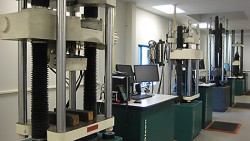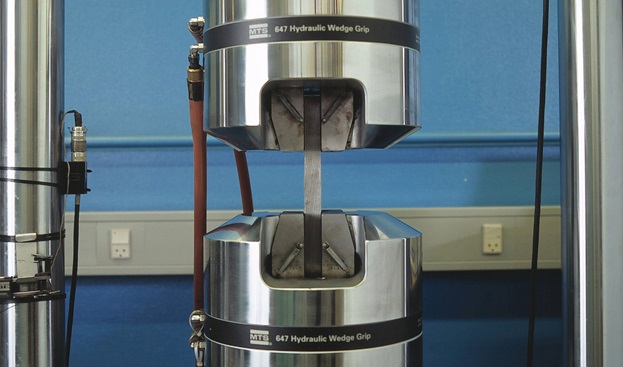Materials Test Lab Insights: Navigating Quality Analyses
Pressing Borders: Discovering Strategies in Products Screening
In this seminar, we will dig right into the innovative and cutting-edge techniques made use of in the field of products testing. As modern technology advancements, so does our capacity to press the limits of what is feasible in testing and examining various materials. Join us as we get started on a trip of discovery and expedition in the world of materials screening.
Advanced Imaging Technologies
Advanced imaging modern technologies have reinvented the field of materials screening, permitting researchers to dig much deeper right into the structural buildings of materials. These advanced methods have actually opened up new opportunities for researching and assessing materials, supplying useful insights that were previously unattainable.
One such sophisticated imaging innovation is X-ray calculated tomography (CT), which makes use of X-ray light beams to create 3D pictures of the interior framework of products. By recording several X-ray photos from various angles and rebuilding them, scientists can visualize the internal features and problems of materials with exceptional detail. This non-destructive technique is particularly useful for examining intricate frameworks, such as composite materials or parts with detailed geometries.

In addition, atomic pressure microscopy (AFM) has emerged as an useful tool for identifying the surface area homes of products at the nanoscale. By checking a sharp probe throughout the product's surface area, AFM can gauge pressures and create detailed topographic maps, offering useful information regarding surface area roughness, mechanical buildings, and attachment pressures.
Cutting-Edge Simulation Methods
A series of state-of-the-art simulation methods are pushing the boundaries of materials testing, offering researchers unprecedented insights right into product actions. These sophisticated simulation techniques employ sophisticated computational methods to design and predict the performance of materials under different conditions. By mimicing the habits of materials at the atomic and molecular degree, researchers can better understand the hidden devices that regulate material homes and efficiency.
An additional powerful strategy is limited element analysis (FEA), which separates a complicated framework or material right into smaller, more workable components and evaluates their actions under various lots. FEA is commonly made use of in engineering and products scientific research to study the action of products to mechanical, thermal, and electro-magnetic pressures.
Moreover, multiscale modeling combines different simulation approaches to bridge the space in between atomistic and macroscopic ranges. By incorporating information from various length scales, scientists can properly predict the habits of products under real-world problems.
These advanced simulation approaches are transforming materials screening by giving insights that are otherwise tough or difficult to get experimentally. They enable researchers to enhance product style, discover brand-new materials, and enhance the efficiency and dependability of existing products in a vast array of sectors, from aerospace to biomedical.
Non-Destructive Checking Strategies

- Numerous non-destructive screening techniques are employed in products evaluating to check out the residential properties and integrity of products without causing damages. These methods play an essential duty in various markets, consisting of aerospace, auto, building and construction, and manufacturing, where the high quality and integrity of materials are extremely important.
One generally used non-destructive screening strategy is ultrasonic testing. This technique entails sending high-frequency sound waves with a product and analyzing the echoes that bounce back. By gauging the moment Get More Info it considers the mirrors to return, specialists can figure out the density of the product, spot interior flaws, and examine the total architectural integrity.
Another commonly utilized strategy is radiographic testing, which utilizes X-rays or gamma rays to examine products. This technique is specifically reliable for spotting inner issues such as additions, spaces, or fractures. By revealing the product to radiation and recording the resulting photo on a movie or electronic detector, professionals can review the top quality and sturdiness of the product.
Other non-destructive screening methods include magnetic fragment screening, dye penetrant testing, and eddy existing screening. Each technique has its very own special advantages and is suitable for specific product kinds and applications.
High-throughput Screening Approaches
High-throughput testing methods offer a effective and extensive methods of examining materials in huge quantities throughout the screening process. This strategy includes the synchronised testing of countless samples, permitting for the quick identification of materials with preferred characteristics or buildings.
One of the vital advantages of high-throughput testing approaches is the capability to check a large range of materials in a short amount of time. Traditional screening approaches usually need taxing and labor-intensive processes, making it tough to evaluate great deals of examples. With high-throughput screening, scientists can promptly evaluate materials on a range that was formerly not feasible.
One more advantage of high-throughput screening is its ability to determine products with details homes or characteristics. By evaluating a lot of examples, scientists can identify materials that exhibit certain residential or commercial properties, such as high stamina or superb conductivity. This makes it possible for researchers to tailor materials for specific applications or industries.
High-throughput testing strategies additionally permit for the exploration of brand-new products with one-of-a-kind residential properties. this contact form By examining huge amounts of products, scientists can discover products that display novel attributes or actions. This can bring about the growth of brand-new products that have a large range of applications, from innovative electronic devices to power storage.
Novel Multi-scale Analysis Approaches
The application of novel multi-scale analysis methods boosts the accuracy and accuracy of materials testing processes. By combining multiple ranges of analysis, researchers have the ability to obtain an extra comprehensive understanding of the actions and buildings of products. Conventional materials examining techniques usually concentrate on macroscopic residential properties, however these approaches fall short to catch the elaborate information and interactions that take place at smaller sized scales.
One instance of a novel multi-scale evaluation technique is making use of computational modeling. By mimicing the behavior of products at different ranges, researchers can anticipate and comprehend their mechanical, thermal, and chemical homes. This allows for even more accurate forecasts my latest blog post and optimizations of product performance.
An additional technique involves the usage of advanced imaging methods, such as electron microscopy and atomic force microscopy - materials test lab. These techniques allow researchers to picture and analyze products at the nanoscale, providing insights right into their microstructure and composition. By integrating these monitorings with macroscopic testing information, an extra complete image of the material's actions can be acquired
In addition, the integration of equipment learning algorithms and information analytics in products screening has likewise boosted the precision of analysis. These methods can determine patterns and relationships in large datasets, enabling faster and extra efficient analysis of materials properties.
Conclusion
To conclude, the exploration of methods in products screening has actually led to significant developments in various areas. Advanced imaging technologies have enabled in-depth evaluation and visualization of product frameworks. Cutting-edge simulation methods have facilitated the prediction and understanding of material behavior. Non-destructive testing strategies have actually made it possible for the evaluation of product honesty without creating damages. High-throughput testing techniques have sped up the discovery of new materials. Last but not least, unique multi-scale evaluation techniques have provided insights right into product residential properties at various scales. These innovations have actually pushed the borders of products testing and paved the means for additional research study and innovation.
A range of advanced simulation methods are pressing the boundaries of products screening, providing scientists unmatched understandings into product behavior (materials test lab). By imitating the actions of materials at the molecular and atomic level, scientists can much better comprehend the hidden mechanisms that govern product homes and efficiency
Various non-destructive screening strategies are utilized in products checking to examine the residential properties and integrity of materials without creating damages. By exposing the material to radiation and catching the resulting photo on a movie or digital detector, professionals can evaluate the high quality and strength of the material.
By evaluating big amounts of products, researchers can uncover materials that display unique characteristics or habits.